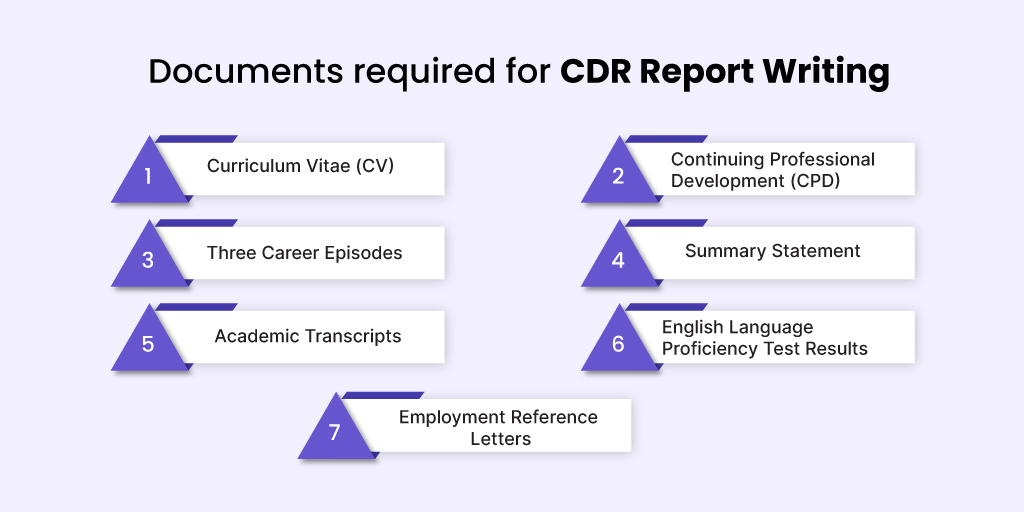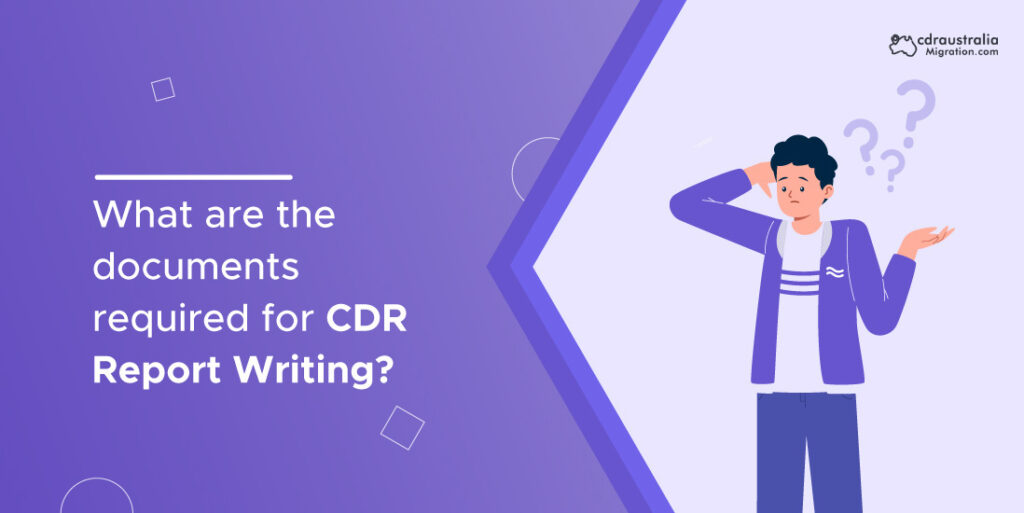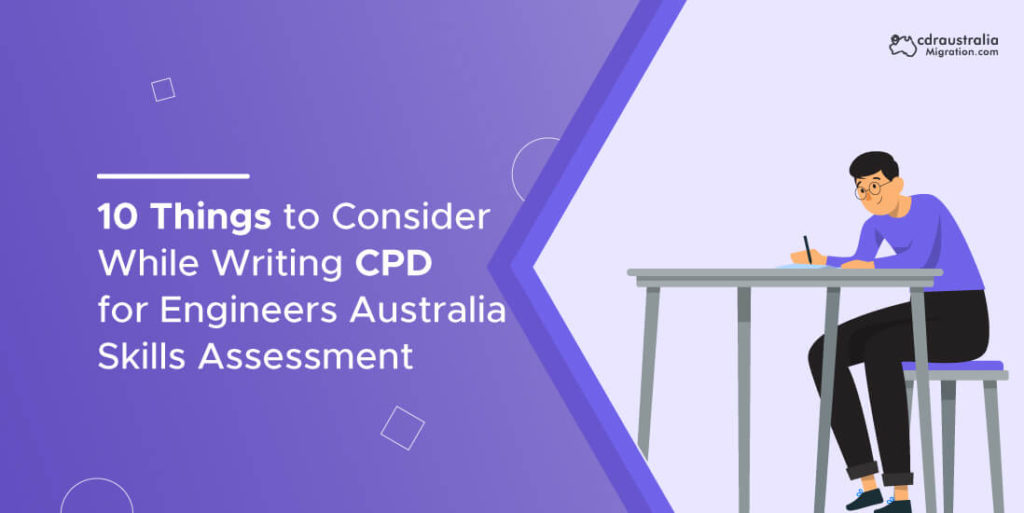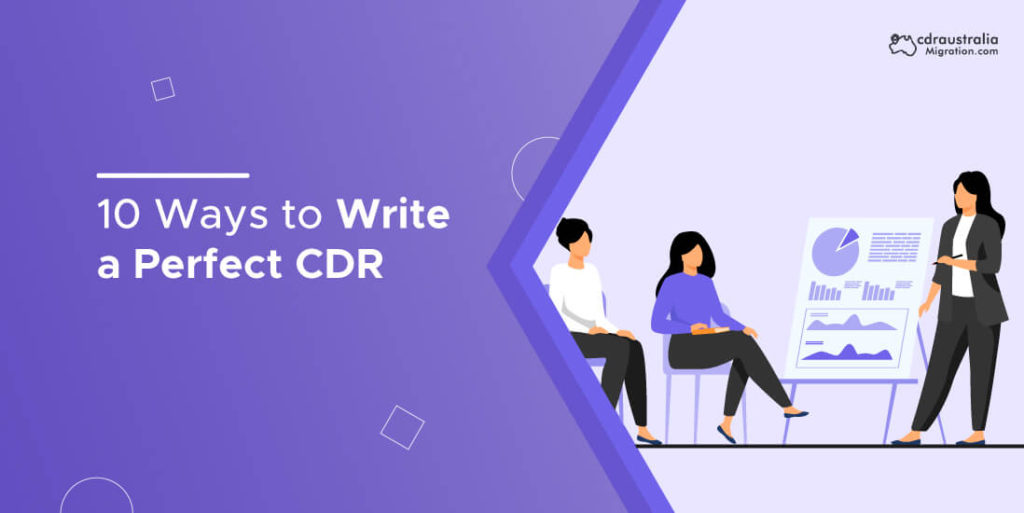If you are an engineer seeking to live in Australia as a Skilled professional, you must get visa approval from the Australian Immigration Department. However, you must complete a Competency demonstration report before applying for a visa.
Certain documents are necessary for the CDR report to prove your skills, qualifications, and experience.
It is the most important prerequisite for engineers like you to enter Australia. Engineers are in high demand in Australia, as are other talented professionals. Australia has welcomed skilled personnel and residents from all over the world.
This article will discuss the essential documents required for CDR report writing to help you successfully navigate the assessment process.
What are CDR reports?
The competency demonstration report is a needed procedural document for any skilled migration visa in Australia. CDR data highlights each skill and competency you’ve achieved through education or on-the-job training.
Competency Demonstration Report (CDR) is a crucial document for engineers who wish to migrate to Australia. It serves as a means to showcase their skills, qualifications, and experience to the Engineers Australia (EA) assessment authority. Crafting a comprehensive CDR report requires a thorough understanding of the documents needed to support your claims effectively.
Who needs CDR reports and why?
CDR reports are essential for aspiring engineers who wish to migrate and establish themselves in Australia. The first step for these engineers is to undergo an assessment by Engineers Australia (EA), the designated assessing authority for engineering occupations.
Engineers from countries fully signatory to the Sydney Accord, Dublin Accord, or Washington Accord and wish to migrate to Australia can obtain certification through the Migration Skills Assessment (MSA). However, individuals from countries not licensed by EA must submit a Competency Demonstration Report (CDR).
Engineers Australia (EA) requires two primary assessments:
Engineering skills assessment: EA has provided clear guidelines for assessing engineering skills. The assessment process primarily depends on the pathway chosen by the engineer. Additionally, the assessment criteria vary based on the industrial category to which the engineer is applying. EA has thoroughly defined the expectations for each occupational class.
English language proficiency: Demonstrating proficiency in the English language is necessary. However, this requirement may be waived for individuals who have completed an Australian Undergraduate Engineering Qualification, a 2-year Master’s Degree, or a Ph.D. program at an Australian university. Native English speakers from countries such as Australia, USA, UK, Ireland, Canada (excluding Quebec), and New Zealand may also qualify for a waiver. However, EA reserves the right to request an English language test if necessary.
Documents required for CDR Report writing

1. Curriculum Vitae (CV)
Your Curriculum Vitae (CV) overviews your academic background, professional experience, and personal details. It should include your full name, contact information, educational qualifications, employment history, memberships in professional organizations, and any significant achievements or awards related to your engineering career. Ensure that your CV is up-to-date, organized, and free from errors.
2. Continuing Professional Development (CPD) list
The CPD list outlines your commitment to ongoing professional development as an engineer. Include all the relevant workshops, courses, conferences, seminars, and training programs you have attended to enhance your skills and knowledge in your field. Mention the dates, duration, and a brief summary of each activity. This list demonstrates your dedication to staying up-to-date with industry trends and advancements.
3. Three Career Episodes
Career Episodes are the most crucial sections of your CDR report. You must write three episodes highlighting different projects or work experiences. Each episode should be based on a particular period or significant engineering task and showcase your role, responsibilities, and achievements. Include technical details, drawings, calculations, and evidence of your problem-solving abilities. Make sure to structure each episode using the following format:
- Introduction and background of the project/task.
- Your specific role and responsibilities.
- Detailed description of the project/task, including engineering activities.
- Any challenges faced and how you overcame them.
- Your personal contributions and achievements.
- Summary and lessons learned.
4. Summary statement
The Summary Statement is a cross-referencing document that links specific elements of your career episodes to the Engineers Australia (EA) competencies. It should demonstrate how your engineering knowledge and skills align with the required competencies for your occupational category.
In the Summary Statement, you must reference the paragraphs in your career episodes that demonstrate your competency. Use the EA’s Migration Skills Assessment (MSA) booklet to understand the format and requirements for the Summary Statement.
5. Academic transcripts
Include certified copies of your academic transcripts to verify your educational qualifications. These transcripts should clearly display the courses you have completed, grades achieved, and the institution’s official seal or stamp. If your transcripts are in a language other than English, make sure to provide certified translations as well.
6. English language proficiency test results
To demonstrate your English language skills, provide the results of an approved English language test such as IELTS, TOEFL, or PTE. Ensure that your test results meet the minimum requirements of Engineers Australia or the relevant assessing authority.
7. Employment reference letters
Include employment reference letters from your previous employers to validate your work experience. These letters should be on official company letterhead, signed by authorized personnel, and provide details about your job title, employment period, roles, responsibilities, and achievements. The letters should also mention your key engineering skills and highlight your ability to work in a team and solve complex problems.
😀😀 Read More: ACS Skills Assessment for Australia Migration.
Boost your CDR Report with these valuable tips.
If you want to give your CDR report a boost, take a look at these helpful tricks for writing an impressive CDR:
- Familiarize yourself with the MSA manual: Before diving into your CDR report, thoroughly reading the Migration Skills Assessment (MSA) manual is crucial. Understanding the purpose of the report and its components is essential. The report includes Continuing Professional Development, three career episodes, and a summary statement.
- Choose projects wisely for Career Episodes: Selecting the right projects for your career episodes is vital. Start by researching the skills and qualities Engineers Australia (EA) looks for in candidates. Then, highlight your abilities and knowledge by showcasing comprehensive episodes that align with EA’s expectations.
- Emphasize career progression: Each career level should stand out distinctly. It is advisable not to write about the same project multiple times throughout your career. Engineers Australia values updates on your work experiences across various projects.
- Maintain Australian english standards: CDR Reports should be written in Australian English. Ensure that your spelling, grammar, and writing style conform to the Australian language. Include an accurate translation if you have created Career Episodes in other languages.
- Use first person and active voice: Write about your career experiences using the first person and active voice. EA is interested in your individual contributions rather than group accomplishments. Instead of focusing solely on your organization’s achievements, highlight your personal engagement and participation in the projects.
- Avoid plagiarism: Engineers Australia has strict guidelines against plagiarism. Ensuring that all content in your CDR report is original and not copied from any other sources is essential. CDR samples should only be used as a reference or guide.
- Craft an impressive Summary Statement: The Summary Statement is the first thing EA assessors notice. Therefore, exercise caution and pay attention to detail when creating it. Connect the puzzle pieces by linking relevant paragraphs from your career episodes to your summary statement.
For engineers aspiring to immigrate to Australia, creating a comprehensive and well-structured CDR report is crucial. To increase your chances of a successful evaluation, it is important to closely adhere to the requirements set by Engineers Australia (EA).
Remember that the CDR report showcases your engineering abilities and knowledge, so be concise and precise when describing your accomplishments. Best of luck as you prepare your CDR, and don’t forget to include all the necessary documents required for skill assessment engineers australia.
CDR Australia Migration for your assistance
When it comes to writing your CDR report, RPL report, or KA02 report, CDRAustraliaMigration is here to guide you every step of the way.
Our team comprises experienced engineers and information technology specialists who can provide valuable assistance. Whether you’re seeking support for Australian migration or need help with your reports, we offer a comprehensive package of services tailored to your needs.



